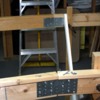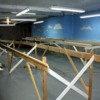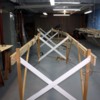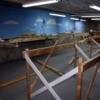Russel, you are correct! I'm going with the grade. The layout's big enough to have lots of interesting things going on. My only regret is I'm doing it very old school where the track is basically running in parallel lines following the table perimeter. I looked at Howard's and he got continuous curves. Not to be argumentative, but there are also railroads in this country, lots of them, where the tangent tracks are quite long. In fact, if railroad planners had way, there wouldn't be curves since curves each up tremendous amount of horsepower. Besides, I really like looking as the whole train in all of it's glory. I'm going to have some cuts and fills and maybe a mountain too, but it won't be West Virginia railroading. It's a great hobby and we each design our layouts to serve our needs and desires.
Now onto today's progress report...
With a little help of the grandkids to keep the first part of the 2nd module from collapsing before I get real fasteners in place, I got the far end of the 2nd (main) module started. As I was looking at it, it didn't seem right. It was too wide! It was supposed to be 40" from inside girder to inside girder and it was 48". 48" inches is not good! It puts the ends of the joists right on the girders if I want to get two joists out of every 8 ft. 1 X 3. But supporting a beam right at the ends is the weakest method of supporting it and will promote sagging in the center. It wasn't too late to fix this problem. Only two out of five legs sets were incorporated in this part. Since I had put the longitudinal diagonal braces in place, the legs were stable, so I removed the X bracing, took my original spacing beam and marked a 40" line, and with the help of grandson #1 clamped the legs at the new distance. I put the X-Brace in place and marked off the new (shorter) angles and cut them down to size. It worked well and I then restarted the production line to modify the other three leg sets with the correct distance.
With that out of way, work progressed quickly. This main module makes a modest 23" offset about a 1/3 of the way along as the railroad widens towards the left end to compensate for the 24" step out in the back wall. In my previous design the main girder also had a similar bend so I had Simpson Strong-tie splice plates that already had a bend in them.
I was now working alone so I need to develop a nice way to erect the rest of the module without yesterday's collapse. I screwed the splice place to the end of one girder and using a nice c-clamp to temporarily fasten the mating girder to it with the other end of the mating girder laying on the floor. Then I moved about halfway down the girder (this was a long segment) and using a hefty c-clamp, tied a leg set to the girder at an approximate level with the leg close to vertical.
I left this leg alone for a while since it was not in its true position, but it was just adding stability. I then went to the true location and attached another leg set with quick clamps. The leg sets are spaced about 8 ft. apart. At this point I did fine leveling of the girder and cross-leveled with the opposite girder. If a hit with the soft-headed hammer was sufficient, that was good, but often I had to release the clamp and hold it all together with the level lying on the girder and try to get it close.
I then put it one carriage bolt and tightened it to enable me to get the quick clamp out of the way. I put the level on the leg's side and plumbed the leg and then drilled the second hole for the other carriage bolt. With both tight, the leg was reasonably stable and didn't need further clamping until the longitudinal braces are installed.
Speaking of longitudinal braces, here's a pile of them ready to unpacked and re-used. It's neat that a lot of this layout was first created 13 years ago in Germany. Many of the pieces still have the German bar code stickers on them. All of the carriage bolts I'm using for these leg sets are 6mm sets from the original layout. Each rebuild is incorporating pieces of the old and besides being a nostalgia trip, it's saving me a bunch of moo-la.
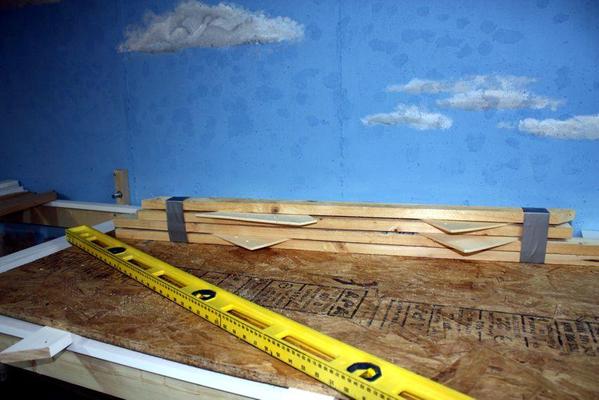
After the legs are tied in and every thing is ship shape, I went back and added fasteners to the splice plates and removed the small c-clamps. There will be a second splice plate on the backside of each girder which will make the splice complete. Here's the splice plates in use.
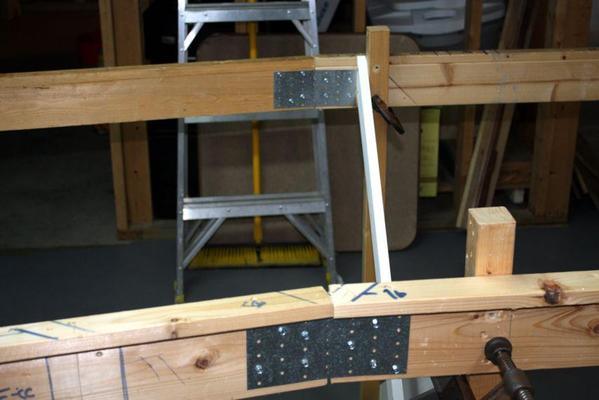
I repeated the above steps for the left hand part of the main module. I then un-clamped the leg in the temporary position and moved it further left into its final location. It was going to lie in the left hand bend, which wasn't there at the time I used the leg to support the mid-section. That leg will be fastened tomorrow. I did a lot of stooping, and bending today and my back let me know that I did enough today.
Notice on these pictures the wooden splice plates I originally used to join girders. They were clunky and used a lot of screws, but they were strong. Using the metal plates is entirely sufficient.
Here's several views of this module. It's big! The final amount of offset will be determined by the connecting it to various cross girders that tie both sides of the layout together. After I get the final deviation, I'll install the second layer of splice plates which will help lock in the angles.
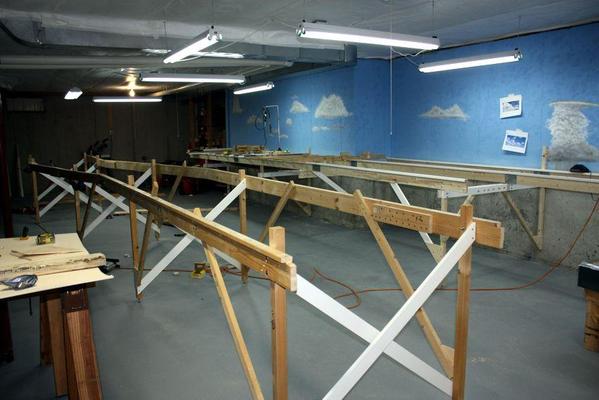
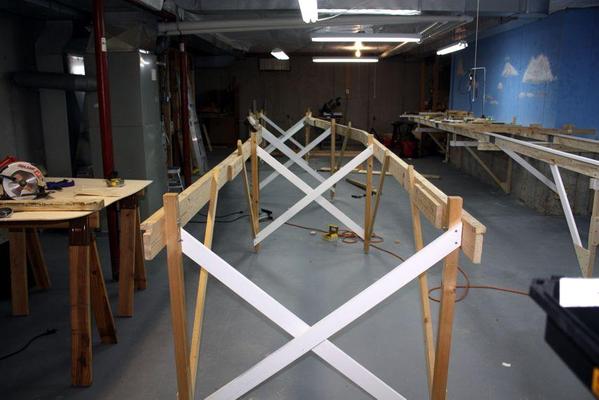
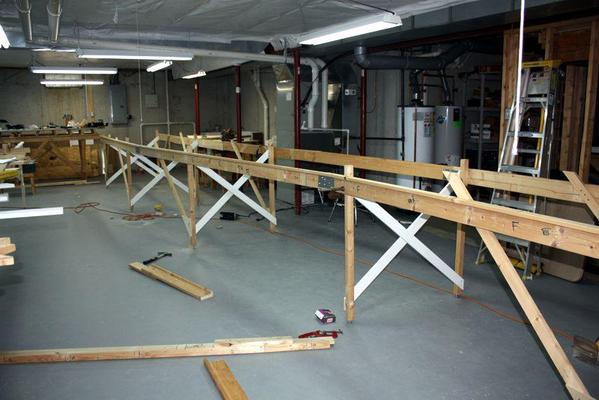
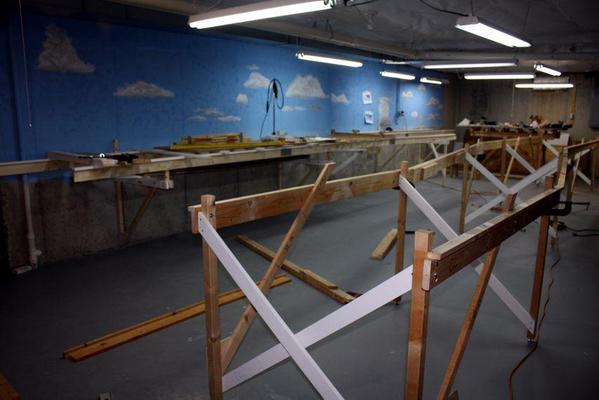
When all the legs are complete, I'm going back with the saber saw and trimming off the tops of the diagonal braces so they won't be in the way. I seem to be mounting the gusset a little higher up on the leg this time resulting in all the diagonals sticking up about the girder. This layout's been assembled and disassembled three times so there's markings on the girders from its previous incarnations.
Tomorrow I'll finish that one leg and start working on the end modules. Once all the girders are in place, I'll start laying out where all the joists will go based on what they're supporting. And I have to order the foam roadbed, lots extra track, plus about 500 feet of wire. I'm going to wire the railroad in preparation for DCS and TMCC. I don't own any Legacy equipment (yet) so I'm not heading that way.
If you've all read so far, I have a question... Should I use twisted pair cabling for the DCS instead of either zip cord or individual leads? Twisted pair cancels digital interference (or so I've been led to believe.)




